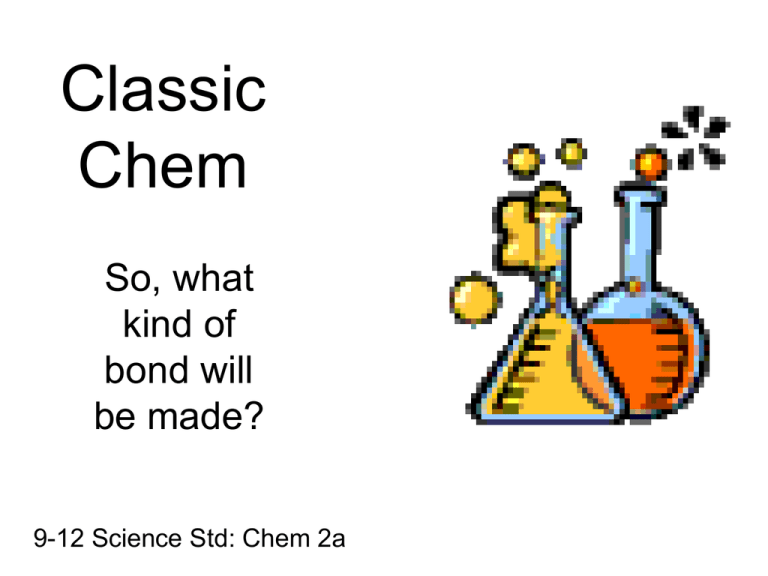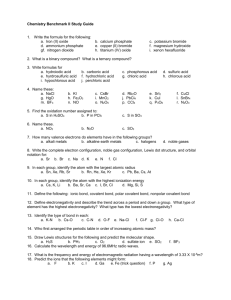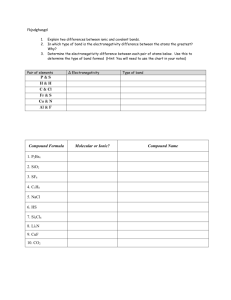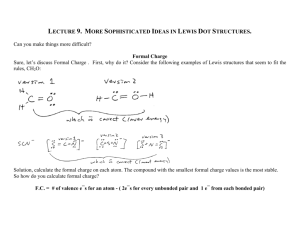We have covered
advertisement

Classic Chem So, what kind of bond will be made? 9-12 Science Std: Chem 2a We have covered: The parts of an atom: We have covered: How the periodic table was made We have covered: The names of some groups… We have covered: The trends of some properties We have covered: Some information about valence electrons electron neutron proton We have covered Types of bonds Covalent, Polar Covalent, Ionic, Metallic And how they work We have covered And the Octet Rule To see if the atoms will bond So now we need to see If the atoms are going to bond… What kind of bonds are they going to make? Covalent, Polar Covalent or Ionic? Here’s how we find out Remember Electronegativity? The ability of an atom to pull on electrons? Fluorine is the highest Gets smaller like this Here’s how we find out Here is your own copy of a periodic chart That has the electronegativity printed on it Here’s how we find out Electronegativity of each element Is shown here for each element How does this help us Electronegativity is like a game… …a game of “Tug-of-War” How does this help us If you are evenly matched The knot stays in the middle How does this help us If one side is a little stronger…. The knot moves more to one side How does this help us If one side is a lot stronger…. The knot moves all the way This works the same in bonds They play “tug-of-war” They do it with electrons in bonds This works the same in bonds If the atoms are equal…. The electrons spend equal time Covalent Bond This works the same in bonds If one atom is a little stronger The electron spends more time with one Polar Covalent This works the same in bonds If one atom is a lot stronger The electron moves to that atom Ionic Bond How can we tell the strength? Electronegativity of the atom Compare the electronegativity Get the type of bond Here’s how it works Atom 1 Atom 2 3.8 1.4 2.4 Subtract the 2 values And compare to a chart to get the type of bond Here’s how it works If the answer is 0.0 – 0.3 Covalent Bond 0.3 – 1.7 Polar Covalent Bond 1.7 – 4.0 Ionic Bond That’s all there is to it….. Now it’s your turn Time for another exercise Yes….. Another worksheet Now it’s your turn Using your new periodic table Fill in the information on the worksheet Your Homework….. Finish your Bond Worksheet to turn in tomorrow You have a tool to help you Bond calculator Here’s how it works Find the larger electronegativity on the outside wheel Find the smaller electronegativity on the inside wheel Here’s how it works Rotate the inner wheel until the smaller number Is under the larger number on the outer wheel Here’s how it works Read the type of bond in the little window C = Covalent, P = Polar Covalent, I = Ionic








